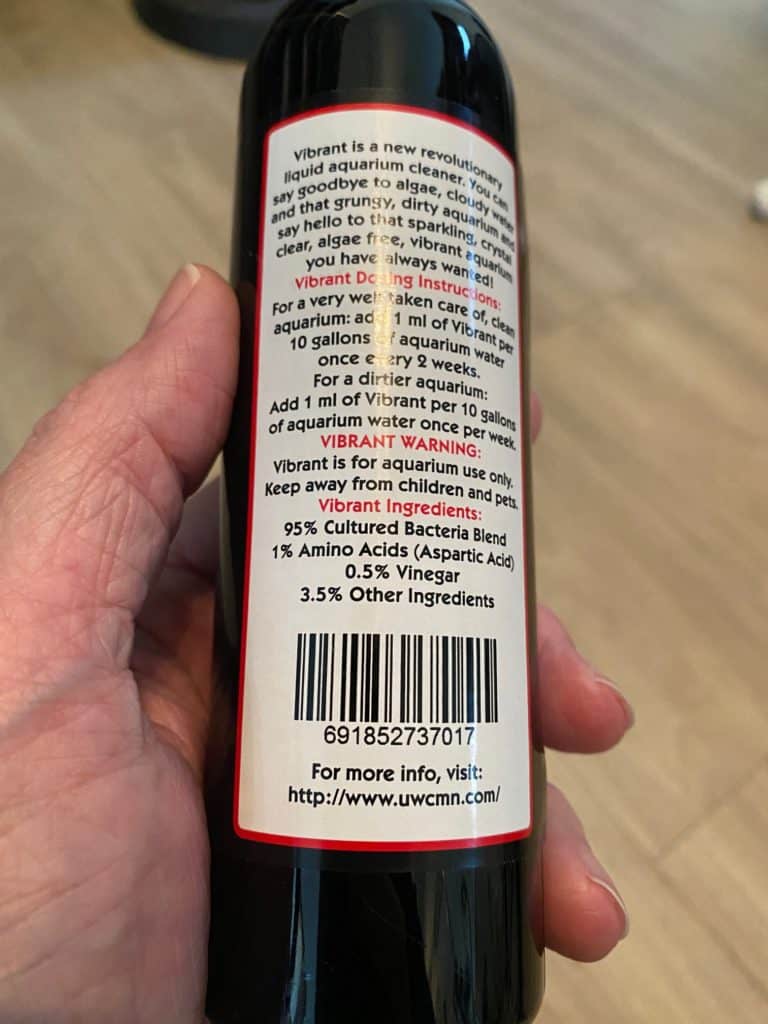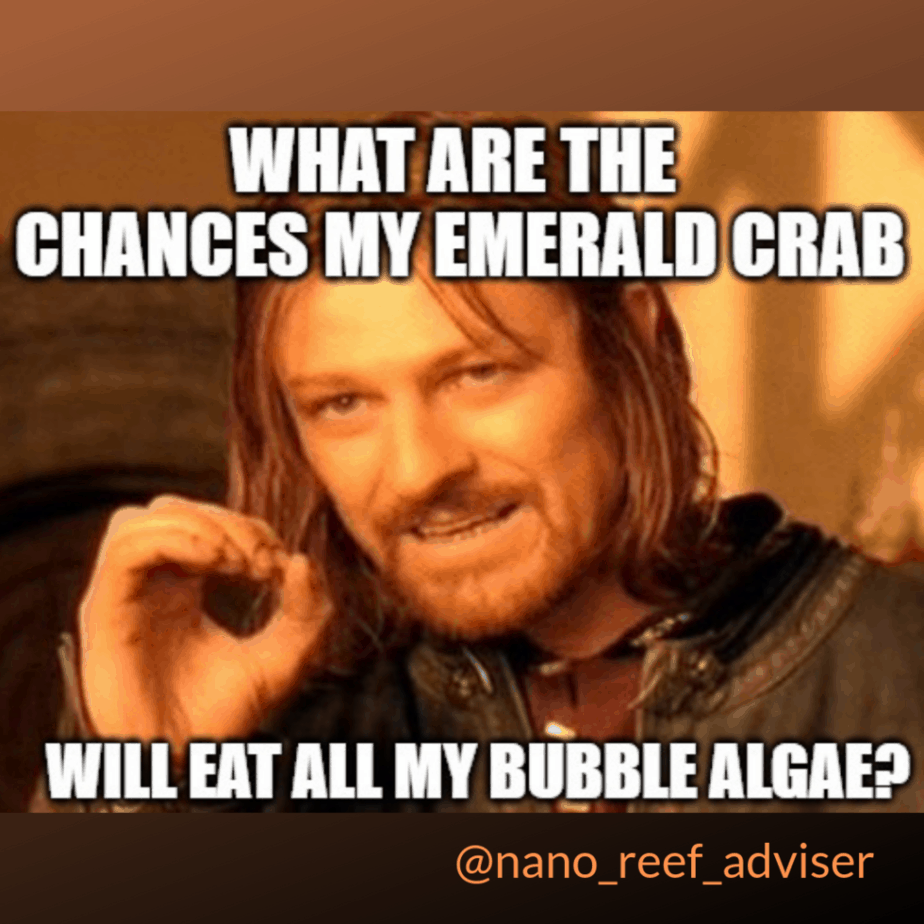Green bubble algae show up in saltwater reef tanks as green bladders filled with fluid. The bladders are round, elongated, curved, or in branches. They can be in dense groups of small spherical green balls and up to 2” long x 1” wide elongated sausages. Here is a list of 8 prevalent green bubble algae species:
- Ventricaria ventricosa
- Boergesenia forbesii
- Valonia aegagropila
- Valonia fastigiata
- Valonia macrophysa
- Valonia utricularis
- Bornetella sphaerica
- Codium ovale
Is green bubble algae bad?
The short answer is BAD! Like most algae, if you don’t get it under control it will quickly overcome your tank. Green bubble algae are worse than many other nuisance algae because removal is so difficult. While the smooth green shapes are soothing to the eye, don’t be fooled into thinking it is ok to leave in your aquarium.
How to get rid of bubble algae
You can manually remove bubble algae that is accessible by grabbing the grouping with your fingertips and gently wiggling back and forth until it dislodges at the base. In crevices and other tight areas of rockwork, you will need a tool such as an awl or flathead screwdriver that is small enough to reach into tight spaces and dislodge the algae. You must be very careful not to pop the algae by squeezing too hard or with the hand tool.
There is anecdotal evidence that when you pop one of the vesicles the released liquid contains spores that will enter the water column. This is like spreading ‘algae seeds’ over your entire aquarium. I have not been able to find scientific proof of this to date, but my personal experience has made me a believer.
I’ve tried a number of options that were all widely recommended for the removal of bubble algae when I had it in my reef tank. It wound up being months of chasing my tail and watching the bubble algae take over the hidden and not so hidden nooks and crannies of my live rock.
Does Vibrant get rid of bubble algae?
The only thing that I found that solved the issue 100% also began to work instantly! The bubble algae didn’t disappear overnight – but I could see results faster than any other method I tried.
The initial excitement was that I had stopped the growth of new bubble algae seemingly overnight. Now, when I removed large areas of algae by hand – even if I popped some of the bubbles, no new bubble algae appeared.
Next, the healthy green bubble algae began to turn silver or ‘clear’. This let me know that it wasn’t happily growing wild any longer – but it was dying.
Bubble algae treatment success!
I want to let you know that I run a natural reef tank that is as free of chemicals as I can make it.
That is the reason I tried emerald crabs, hermit crabs, urchins, snails, fish and everything else that is supposed to eat green bubble algae first.
Desperate, I began searching again for a solution. Luckily, my last round of searches corresponded with the publishing of a video demonstrating 3rd party testing of Vibrant Aquarium Cleaner for Reef Aquariums conducted by BRS.
Although the multiple-tank 3rd party testing video (see the BRS video later in this post) showed great results, I was still concerned about exactly what I would be adding to my tank.
The good news was that Vibrant is 95% cultured bacteria! The majority of reef tank owners already use nitrifying and other bacteria routinely – so this was nothing out of the ordinary!
Vibrant comes in two formulas, saltwater aquarium, and reef tank, so I chose the one for reef aquariums.

The dosing is simply 1ml of Vibrant for every 10 gallons of aquarium water. The dosing pace is once every two weeks for very well taken care of tanks OR once per week for dirtier tanks. If you are having a bubble algae issue – you will be on the once a week schedule.
Worked without changing any other parameters!
Dosing the Vibrant Aquarium Cleaner completely eradicated my green bubble algae issue without me reducing nitrates or phosphates. You should re-read that sentence again, it’s amazing.
Everyone knows that you have to have nutrients under control to stop algae growth, but this time I had someone on my side while I tried to finetune the parameters. That’s why I’m so excited to share this good news.
A video on Vibrant from BRS (below) gives you some insight into how efficient this product is.
What causes bubble algae?
Bubble algae spores are accidentally introduced into home reef tanks from outside sources such as live rock or coral fragments (frags). Proliferation occurs when excess nutrients in the from of nitrates and phosphates in the water are not controlled.
So you went to your local fish store and bought some new coral. You probably didn’t notice the bubble algae on the frag! Maybe you just added some new live rock. Oh wait, what about that handful of chaetomorpha you ‘borrowed’ from your buddies refugium?
It’s sad how many hitchhikers can find their way into our tank even if you treat everything you bring home like it’s covered in Covid-19. Quarantine, dips, sometimes it seems like it doesn’t help because something always finds its way against the precautions.
Green bubble algae control
The basics of green bubble algae control are:
- Manage nutrients in your reef tank by controlling nitrates and phosphates
- Manual algae removal
- Add herbivores known to eat algae in your reef tank
- Grow competitive macroalgae in a refugium, algae scrubber, etc.
Manual Removal
Manual removal: Bubble algae typically have tenacious grips on whatever substrate they have anchored to. The bubble algae can come off in clump s from open areas but are almost impossible to remove from tight crevices. Scraping and poking the algae to remove it will normally lead to popping the vesicles – which is thought to release spores suspended in the liquid contained within.
Perform manual removal as carefully as possible to try and remove as much of the bubble algae intact as possible. This is not nearly as much as of a concern if you are dosing Vibrant.
Herbivors to the resuce?
Suppression with natural ‘enemies’: Herbivores that generally nosh on different things growing on rock, glass, and sand surfaces can really help keep algae controlled. Unfortunately, this works most efficiently when we don’t even know they are doing it.
The time to plan biodiversity and utility livestock into your reef tank is BEFORE you have a problem. Adding new livestock just to solve an emergency is almost always a bad idea.
Nano Reef Adviser
Eating newly-settled spores and young growth is likely to keep the population down and out of sight. However, once algae start to be visible it is too late! Herbivores are not going to keep up with a bubble algae bloom.
Control their resources
Limit what they need to live: Green bubble algae, like any other algae, require nutrients and light. As simple this can be, doing it correctly needs to have been a part of your normal reef maintenance. Your current algae bloom kinda proves you weren’t doing it right. Often something in our life sidetracks us from fully focusing on your reef aquarium. Stuff happens.
Related Article: Low Maintenance Reef Tank – The Easy Way.
A reef tank with robust biodiversity is a great way to ensure that there is little excess food or detritus to turn into nitrates and phosphates. If you have been overfeeding your fish and other critters – stop! Those stomachs are not that large – even though they always act like you haven’t fed them in weeks.
Vibrant is excellent in lending a biological hand with filtration while you get your nutrients under control!
The lesson I learned from trying a variety of clean up crew and fish ‘hired’ to eat bubble algae was that they often wound up eating corals and their fellow clean up crew instead.
How to remove bubble algae
I recommend you don’t try to manually remove the bubble algae until you have dosed Vibrant at least once. You want the bacteria at work prior to the release of spores.
Perform manual removal carefully as possible. You must try to keep the vesicles intact (preferred.) Large chunks of the algae can be removed simply by working it off of the substrate if you can reach it. This should be your first move.
Using the hose-only from your gravel wash siphon setup will work wonders to get into tighter areas. The suction also has the benefit of (hopefully) carrying the spores away from popped bubble algae. You can also DIY a more aggressive tool by attaching a small pointy instrument (think small screwdriver) to the hose with rubber bands. Use the instrument to dislodge the algae. The hose will suck the algae and spores away.
Removing bubble algae from the sump can be easier. However, if you have a refugium and the macroalgae is ‘contaminated’ – then ‘easy’ just went out the window. Nobody is gonna toss chaetomorpha when clean cheato is so scarce lately.
What eats green bubble algae
Here’s a short list of what eats bubble algae in a reef tank:
- Emerald Crabs
- Urchins
- Fish including Surgeonfish and rabbitfish
Initially, a good reefer will think to introduce more biodiversity to fight off bad actors such as algae. The downside to adding livestock to address your reef tank emergency is that many reefers don’t consider the long term impact of the new livestock. Is it compatible with all of your current livestock? Does the new livestock add an additional layer of maintenance or feeding routines? If it’s going to eat what you want to be eliminated – what are you going to feed it later? Especially now that what he was eating is gone?
Related Article: Best Clean Up Crew for a Reef Tank: Complete Guide
So what eats bubble algae anyway? The good news is that there are a number of folks that might feast on your cute little bubbles full-o-spores. The problem is ‘might.’ Trust me, given the opportunity, everything in your tank will eat anything other than what you want it to!

Emerald crabs (Mithraculus sculptus) are well known as green bubble algae aficionados. However, they also are just as happy to feast on your corals and mollusks. They are omnivores. Who wants to eat a salad every day? Your livestock will always eat something of higher nutritional value that is easier to get at. This can often be leftover food your fish and other scavengers have missed.
Surgeonfish and rabbitfish will chomp on algae as well as the next fish. Unfortunately, they come with their issues as well. Do you have adequate tank size to properly hold more than one? One new fish will not be able to solve your algae outbreak. How about venomous dorsal spines? Maybe that will help keep your hands out of the tank!
What about urchins? Urchins will actively eat algae and sometimes too well. Urchins can clear live rock of even coralline algae (GASP.) I guess it’s a good news/bad news thing. The urchin ate your prized coralline algae along with the bubble algae! The coralline algae you worked a year to get in your reef tank is now destroyed.
If you would like to read more on green bubble algae, here is a great article. The article is by Horge Cortes-Jorge Jr. in Reefkeeping magazine.